Vilfredo Pareto (years of life - 1848-1923) - a well-known sociologist and economist. He is one of the founders of the theory of elites, according to which society has a pyramidal shape. At the top of the pyramid is the elite, which largely determines the life of society as a whole. But Vilfredo Pareto is known not only as the creator of this theory. His biography will introduce you to the life path and the main achievements of this scientist.
Origin, childhood
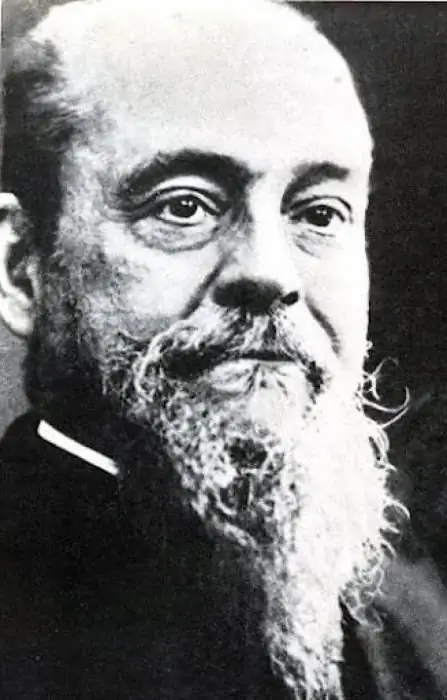
Wilfredo was born into a noble family living in Paris. His father was an Italian marquis, expelled from Italy for his republican and liberal convictions. Pareto's mother is French by nationality. Wilfredo, who had been fluent in both of his parents' languages since childhood, still felt more Italian than French. In 1850, the family was allowed to return to Italy, and it was with this country that the further life of Vilfredo Pareto (childhood, youth and part of the mature period) turned out to be connected.
Education
Pareto received both technical andhumanitarian classical secondary education. Already during his studies, he showed an interest and a penchant for mathematics. Then Wilfredo continued his studies in Turin, at the Polytechnic University, after which he received an engineering degree. Pareto defended his dissertation in 1869 on the principles of equilibrium of solids. The concept of equilibrium would later be one of the main ones in his economic and sociological works.
Life in Florence
The next period of Vilfredo Pareto's life passed in Florence. He was invited here to take up the position of a railway engineer. After some time, Pareto became the manager of metallurgical plants located throughout Italy. His speeches against the militaristic policy pursued by the Italian government belong to this time. Pareto expresses liberal and democratic views.
Personal events
In 1889, Wilfredo married a Russian girl Alexandra Bakunina. However, his wife left him in 1901 and returned to Russia. A year after that, he connected his life with Jeanne Regis, to whom he devoted his main work, written in 1912 ("Treatise on General Sociology"). It was published in Florence in 1916.
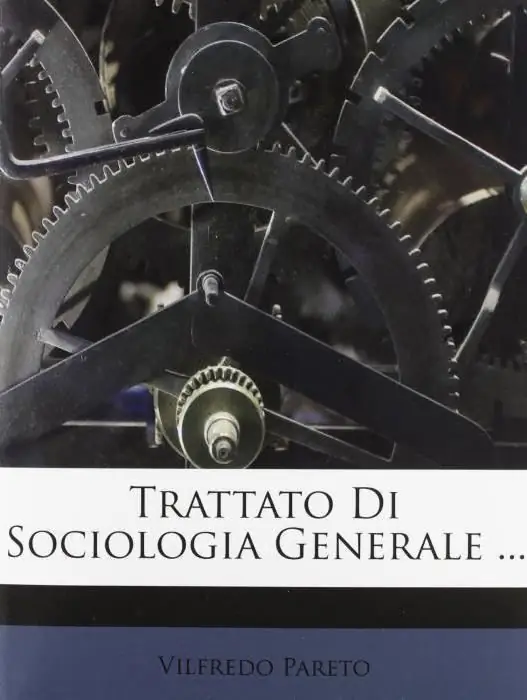
Acquaintance with the works of Italian economists, a turning point in beliefs
Pareto in 1891 got acquainted with the works of two of the most prominent Italian economists, L. Walras and M. Pantaleoni. The theory of economic equilibrium developed by them had a great influence onWilfredo's worldview and subsequently formed the basis of his own sociological system. By the beginning of the 90s of the 19th century, there was a turning point in Pareto's beliefs. The scientist took the position of anti-democratism and conservatism. Between 1892 and 1894, Pareto published a number of his materials on economic theory.
Life in Switzerland
In 1893, a new period begins in the life of the Italian scientist. At this time, he moved to Switzerland, where he became a professor of political economy, as well as head of the department at the local University of Lausanne. Pareto replaced L. Walras, a very well-known economist, in this post. Wilfredo studied at his works and it was at his invitation that he came to Lausanne. At this time, Pareto did a lot of science and published a number of his writings. In Switzerland appeared his "Course of Political Economy" (1896-1897), written in French. Together with the teaching of political economy, Pareto in 1897 began to read at the University of Lausanne and a course in sociology. A year later, he inherited a colossal fortune from his uncle. In 1901, Pareto purchased the villa "Angora", located in Seligny, on the shores of Lake Geneva. It became his favorite place of rest and work. Pareto's Socialist Systems was published in Paris in 1902 (pictured below).
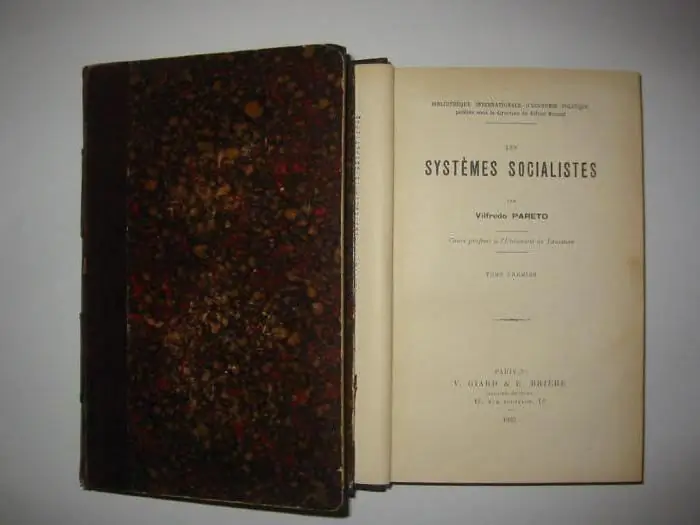
And in Milan in 1907 he published the "Textbook of Political Economy" by Vilfredo Pareto. His main works received great fame, but his most important work was yet to come.
Treatise ongeneral sociology
Wilfredo had to stop teaching in 1907 due to heart disease. After a while, feeling better in he alth, he set to work on a Treatise on General Sociology. Wilfredo wrote this work for 5 years, from 1907 to 1912. In 1916, its first publication in Italian took place, and 3 years later the "Treatise" was printed in French. Wilfredo Pareto from that time until the end of his days was engaged in research only in the field of sociology. At the University of Lausanne in 1918, his 70th birthday was solemnly celebrated.
Last years of life
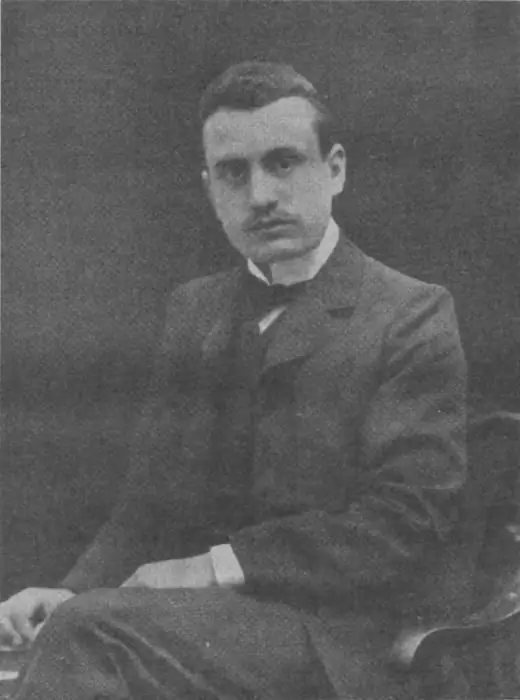
The Italian sociologist published several interesting and important works in the early 1920s. In 1921, the "Transformation of Democracy" was published in Milan, in which all the main ideas of this scientist were summarized. The sociologist in several of his writings sympathized with Italian fascism, to which he expressed ideological support. It was at this time, in 1922, that B. Mussolini (pictured above) came to power in Italy. The new government honored Pareto, many of its members, including the Duce himself, considered themselves students of Wilfredo. Pareto in 1923 became a senator of the Italian kingdom. Then he died in Seligny and was buried here.
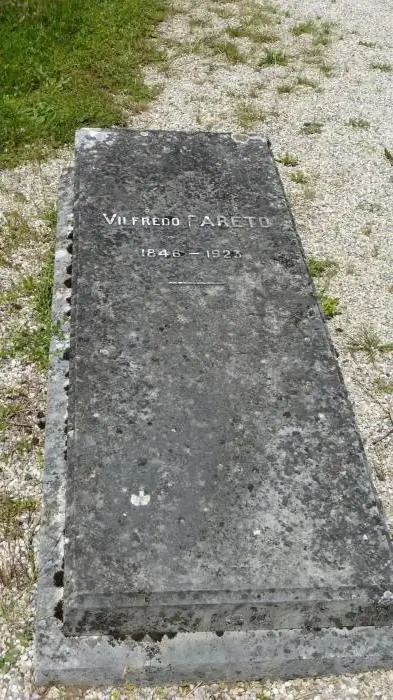
Reasons for turning to sociology
As mentioned above, Pareto turned to sociology rather late, being already a well-known specialist in the fieldpolitical economy. What was it connected with? Probably due to the fact that Wilfredo was no longer satisfied with the concept of "economic man", which was rationalistic and within which the scientist worked for a long time, studying the monopoly market, as well as the distribution of income in society and some other economic problems. Even in the works created at the end of the 19th - beginning of the 20th century, the author's interest in the new model of man is noticeable. This interest was fully realized in the "Treatise on General Sociology" - a voluminous work (about 2000 pages of text).
Abandoning the rationalistic model
Pareto did not accidentally decide to abandon the rationalistic model of man that was dominant at that time, although he himself had been its supporter for many years. In accordance with this model, the individual first thinks about actions in accordance with the goals facing him, and then performs actions that lead to their achievement. According to the Pareto concept, everything actually happens the other way around. First, a person performs certain actions under the influence of interests and feelings, and only then explains them, striving for the validity and plausibility of interpretations. This, in fact, is the basis of one of the main concepts of Wilfredo - the theory of non-logical action.
However, the scientist does not switch to irrational interpretations of human actions. On the contrary, he tries to strengthen rationalism, turning it into "ultra-rationalism", when not only logic is included in the discourse, but also observations and experiments to expose the illusions that people use to deceivethemselves and others, trying to hide the real motives of their own actions and actions.
Let's move on to the consideration of the theory, thanks to which the name of such a scientist as Wilfredo Pareto is familiar to many.
Elite Theory
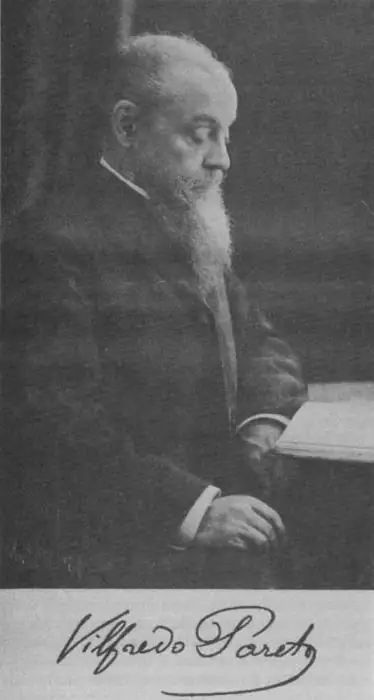
Pareto is the creator of the theory of elites. He talked about their constant change. The Italian researcher called history a cemetery of elites, privileged minorities fighting for power, coming to it, using power and being replaced by other minorities. Wilfredo noted that elites tend to decline. In turn, the "non-elites" are able to create worthy successors for them. This is important because often children do not have the outstanding qualities of their parents. The need for circulation and constant change of elites is explained by the fact that those in power are losing the energy that helped them win their place in the sun.
Elements
Society strives for social balance, which is ensured by the interaction of various forces. Pareto called these forces elements. Wilfredo singled out 4 main elements: intellectual, social, economic and political.
Psychological inequality of people
The theory of Vilfredo Pareto pays special attention to the motives of human actions, so politics for the Italian scientist is largely a function of psychology. Using a psychological approach in the analysis of politics and society, Wilfredo explained the diversity of social institutions by the psychological inequality of people. He noted that societyheterogeneous, and individuals differ morally, physically and intellectually. We can assume that Wilfredo defined the elite by innate psychological properties. He even created a scoring system, according to which a person's abilities in a particular field of activity were revealed.
What keeps the elite in power?
The elite in the Pareto concept is divided into 2 parts: "non-ruling" and "ruling". The latter is involved in management, while the former is far from making power decisions. A small class in power is held partly by its strength and partly by the support of a subordinate class. At the same time, as noted by Vilfredo Pareto, whose theory of elites is substantiated in detail, the "consent resource" is based primarily on the ability of those in power to convince others of their own rightness. The likelihood of consent, he believed, depends on the ability to manipulate the emotions and feelings of the crowd. However, the ability to convince does not always help to retain power, which means that the elite must be ready to act with force as well.
Two types of elite
In the theory of the Pareto elite, there are 2 types of it: "foxes" and "lions". If the political system is stable, "lions" prevail. An unstable system requires combinators, innovators, energetic figures, and therefore "foxes" appear. The replacement of one elite by another is the result of the fact that each of these types of elites has its own advantages. However, in the course of time they cease to satisfy the needs of leading the masses. Maintaining the equilibrium of the system is thereforerequires a constant shift of elites as recurring situations confront them.
Vilfredo Pareto's Law
This is another interesting discovery by Wilfredo. Otherwise, it is called the 20/80 principle, or the Pareto principle. It's a rule of thumb that 20% of the effort gives us 80% of the results, and the remaining 80% gives us only 20%. The Vilfredo Pareto rule can be used as a basic setting when analyzing the efficiency factors of a particular activity, the purpose of which is to optimize the results. According to the Pareto curve, by choosing correctly the minimum of the most important actions, we get a significant part of the total result. Further improvements are ineffective and may not be justified.
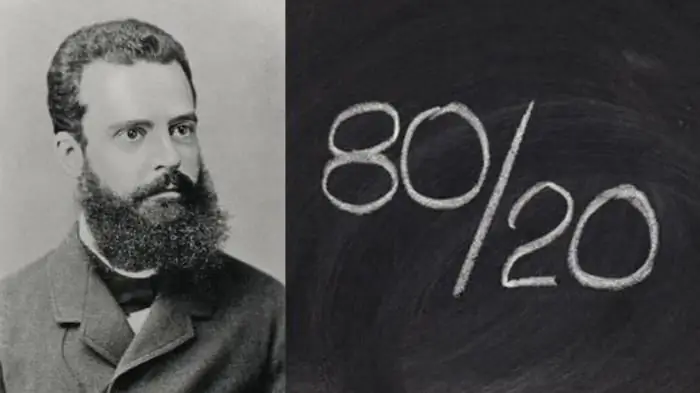
The figures given in the law, of course, cannot be considered absolutely accurate. It's more of a mnemonic rule. The choice of the numbers 80 and 20 is a tribute to Wilfredo, who revealed the structure of the income distribution of Italian households. He noticed that 80% of income is concentrated in 20% of families.
Of course, we talked only in general terms about the contribution to science made by Vilfredo Pareto. Sociology, thanks to his work, began to develop actively. The attention of many scientists was drawn to her. Vilfredo Pareto, whose main ideas are still relevant today, is one of the most famous sociologists and economists of the 19th and 20th centuries.






